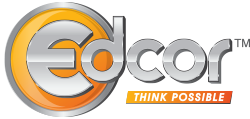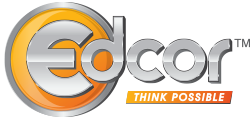Statistics show that American employers spend around $180 B annually on upskilling programs, out of which a significant chunk is towards tuition assistance. Even though more than 75% of the American workforce is interested in upskilling programs, only 40% know about their employer’s tuition assistance programs, 25% of interested employees start their application, and a mere 2 – 4% of employees participate in these programs. Makes one cringe and delve into a root-cause analysis to fix the problem, doesn’t it? The more you read on the topic of underutilization of education benefits the more it becomes clear that even though there are tons of statistics on the problem definition, there aren’t many concrete solutions provided. It was time to look at Edcor’s learnings and experience from the past 41 years, and present solutions that Corporate America at large could finally use to enhance program uptake of their education benefits. That’s exactly what we will be doing with our latest white paper on the topic.
Maximize the utilization of your Education Benefits. Download
According to the International Foundation of Employee Benefit Plans Survey, 92 percent of U.S. organizations offer some sort of educational benefit for upskilling. Education benefits have historically been popular as strategic tools for attracting and retaining top talent, employee engagement, and building an internal talent pipeline. There is a strong link between engagement and performance. Engaged employees produce higher outcomes having an overall positive effect on productivity, safety, retention, and ultimately profitability.
Tuition Assistance (TA) is the most popular education benefit, and it’s obvious why. There is a high ROI on these benefits as they significantly reduce training and hiring costs due to the internal mobility of the talent pool, along with building a leadership pipeline. Also, they lead to highly motivated and engaged employees who spend time and effort in career growth within the organization furthering the workforce productivity metrics. Moreover, the cap of $5250 is tax-free for both the employee and the employer generating yet another win-win equation.
Additionally, education benefits support your DE&I strategy. You probably know that financial concern is the number one reason why working adults don’t go back to school. But do you also know that third-party specialized HR benefits providers like Edcor can help secure zero out-of-pocket expense programs in collaboration with their partner schools – also popularly known as debt-free degrees? These are designed such that the school scholarships or grants cover tuition over and above the employer contribution of $5250+. Most of them have a deferral agreement in place or a direct bill option resulting in no out-of-pocket costs for the employees. This has a direct effect on women and the diversity group since it removes a major barrier to going back to school. Employees feel more valued knowing their employer supports their professional development – enhancing the inclusiveness quotient of the brand.
Read Upskilling is Critical for Businesses and How education benefits integrate with your DEI strategy.
Even so, these benefits are heavily underutilized posing a challege for Corporate America to effectively upskill the workforce. Through our decades of experience and research, Edcor has identified 10 key steps that organizations can take to optimize the utilization of any program. Download now to read more.
Feel free to reach out to us.

Edcor Advising Services partner has over 25 years of experience in producing marketing and engagement programs to drive interest, enrollment, and participation in education benefit programs. Additionally, our exhaustive database of institutions and programs enables us to match the Client’s upskilling needs and strategies. Along with Academic Advising, we will also work with you to drive an employee communications plan and annual schedule of events to reach employees in various ways throughout the year, leveraging both internal and external channels of communication and media, if desired.
Spardha Khera, Edcor




